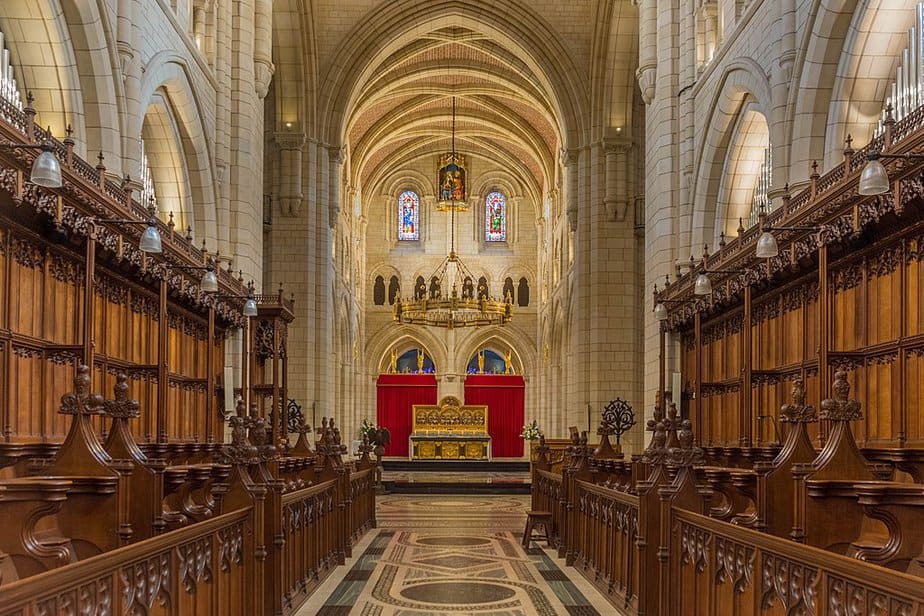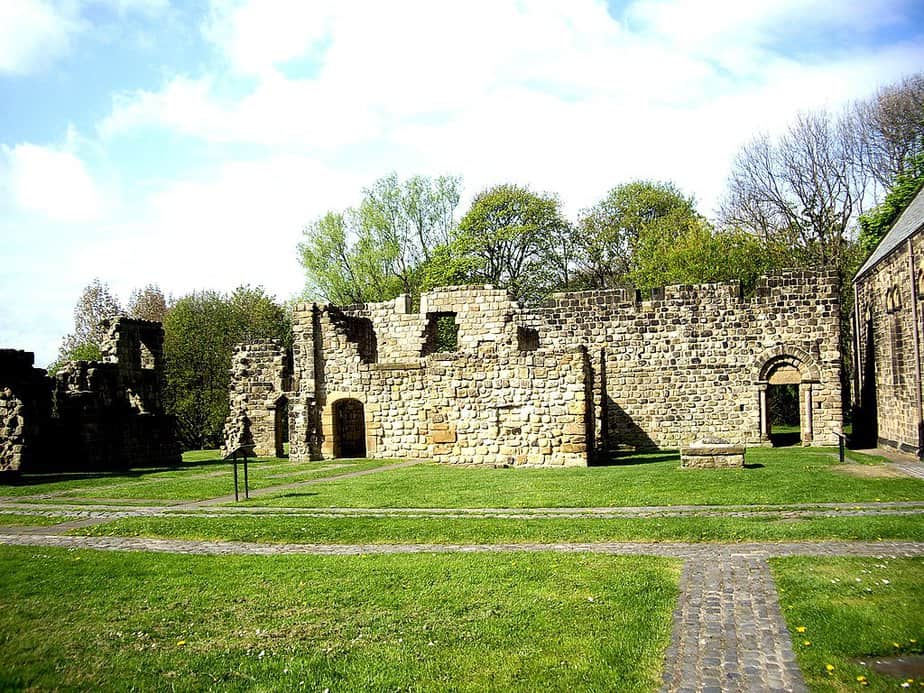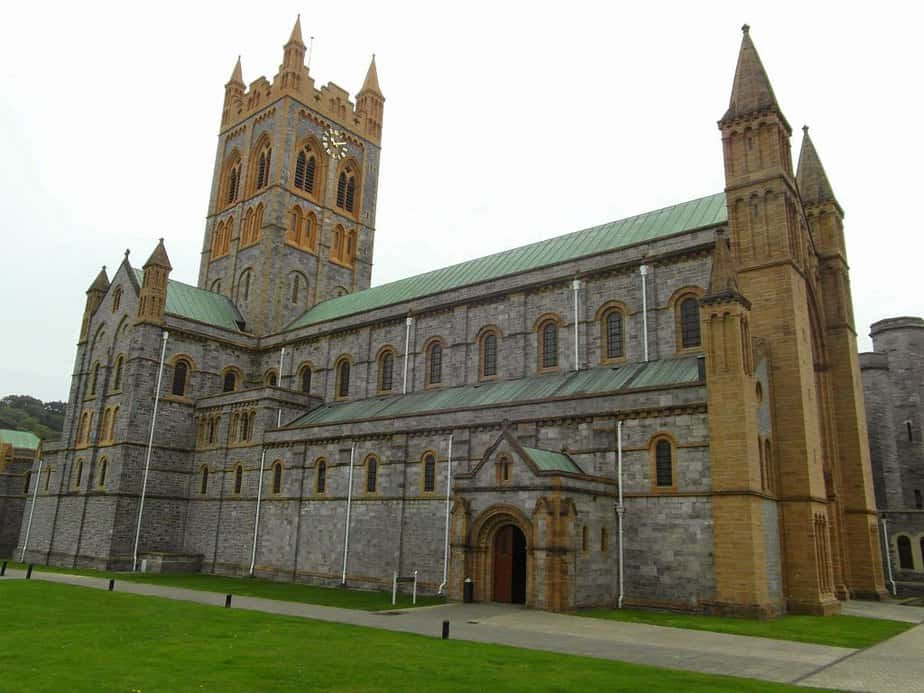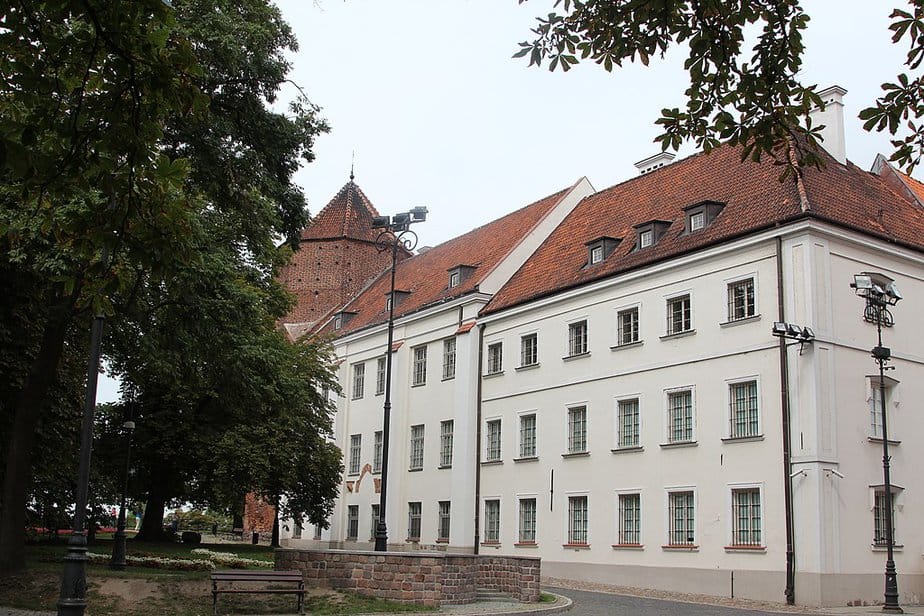Top 8 Remarkable Facts about Buckfast Abbey

Buckfast Abbey Devon by Sarrapis from Wikimedia Commons
Buckfast Abbey is a contemporary Benedictine monastery on the outskirts of Dartmoor. As early as 1018, a Saxon monastery was here. The monastery was converted to Cistercian in 1147, and the entire abbey was rebuilt in stone.
The abbey land was sold and the abbey was left to rot after the Dissolution of the Monasteries in 1539, but Buckfast was restored as a Benedictine monastery in 1882, and it has prospered since then. Buckland is well-known for its beekeeping and production of its own brand of honey as well as Buckfast Tonic Wine.
So what is so special about Buckfast Abbey?
1. A Saxon monastery stood here as early as 1018

Saxon refectory by Stanley Howe from Wikimedia Commons
During Cnut’s reign in 1018, a Saxon monastery stood here. It was modest in comparison to larger Benedictine monasteries, with just about 50 monks. Only a fragment of reused stone from the Saxon structures has been discovered, and the precise location of the Saxon monastery is unknown.
2. The monastery adopted the Cistercian order
In 1137, King Stephen handed Buckfast to the Abbey of Savigny, and a delegation of French monks travelled to England to supervise the transfer of Buckfast to the Savignac order. The new order, however, did not persist long, and the monastery was restored to Cistercian in 1147.
The entire monastery was constructed in stone under Cistercian authority, following a standard plan employed at other Cistercian monasteries around Britain. Only the west cloister undercroft and the north doorway arch from the 12th century remain complete.
3. Buckfast experienced the ravages of the Black Death

Buckfast Abbey by Jagandrk from Wikimedia Commons
In the 13th century, the abbey was most likely at its zenith of wealth. Buckfast, like other Cistercian monasteries, reared sheep and sent wool abroad. Fine floor tiles and Purbeck marble columns have been discovered, indicating the prosperity enjoyed during the height of the medieval wool trade.
Buckfast, like many other towns in England, was devastated by the Black Death. Buildings deteriorated and fell down; even the almshouse next to the south entrance was transformed into a stable.
4. It was very prosperous in the 15th century
In the 15th century, the abbey had another era of relative prosperity, hosting visitors in a purpose-built guesthouse and reopening the almshouses. The abbey sponsored a school and encouraged trade by sponsoring fairs and marketplaces.
The south wing of the guest hall and the Abbot’s Tower, a group of three connected apartments close to the west range, are from this time. Each room has its own fireplace, implying that it was intended to host prominent guests or the elderly.
5. Samuel Berry cleared the ground in 1793 to make space for a new grand residence
The abbey estate was sold after the Dissolution of the Monasteries in 1539, and the monastic structures were left to ruin. Samuel Berry cleared the ground in 1793 to make space for a new grand residence. Only the Abbot’s Tower and the 12th-century undercroft remained to stand, while the remainder of the structures were demolished.
6. Buckfast was reconstituted as a Benedictine monastery in 1882

Former Benedictine monastery by Fallaner from Wikimedia Commons
Buckfast was then reinstated as a Benedictine monastery in 1882 and reconstructed in the 12th-century style using a combination of historical designs and research into the Cistercian abbeys at Fountains and Kirkstall in Yorkshire.
As a result, the Victorian replica of a 12th-century monastery was erected partly on top of the old foundations and included some of the medieval buildings.
7. Buckland is famous for keeping bees
Buckland is well-known for its beekeeping and production of its own brand of honey as well as Buckfast Tonic Wine. Outside of worship hours, the abbey church is accessible, and there are lovely grounds, including a sensory garden, lavender gardens, and even a small section of toxic plants, some of which were utilized for medical purposes in the medieval period.
8. The Abbey church

Abbey Church by Chris06 from Wikimedia Commons
Most visitors to Buckfast come to see the Abbey Church, and with good reason: it is an outstanding example of early twentieth-century architecture. On the foundations of the ancient medieval Cistercian church, the church began in 1907 and finished in 1932.
The majority of the construction work was done by a small group of monks led by another monk who had been educated as a master mason. Work began with only five pounds in funding and a horse and cart supplied by a kind neighbour.
Construction continued indefinitely, even during World War I, when the monks, the majority of whom were German, were only permitted to leave the abbey with special authorization.
Interested in visiting Buckfast Abbey? Buckfast Abbey, the parking park, and the gardens are all free to view. Catholic monks live in the monastery. There is a cafe, a shop, and a vast free parking lot. The centrepiece, though, is the exhibition centre, which depicts the abbey’s history on film and through an interactive multimedia experience. If you happen to visit, do let us know about your experience.
Planning a trip to Paris ? Get ready !
These are Amazon’s best-selling travel products that you may need for coming to Paris.
Bookstore
- The best travel book : Rick Steves – Paris 2023 – Learn more here
- Fodor’s Paris 2024 – Learn more here
Travel Gear
- Venture Pal Lightweight Backpack – Learn more here
- Samsonite Winfield 2 28″ Luggage – Learn more here
- Swig Savvy’s Stainless Steel Insulated Water Bottle – Learn more here
Check Amazon’s best-seller list for the most popular travel accessories. We sometimes read this list just to find out what new travel products people are buying.










